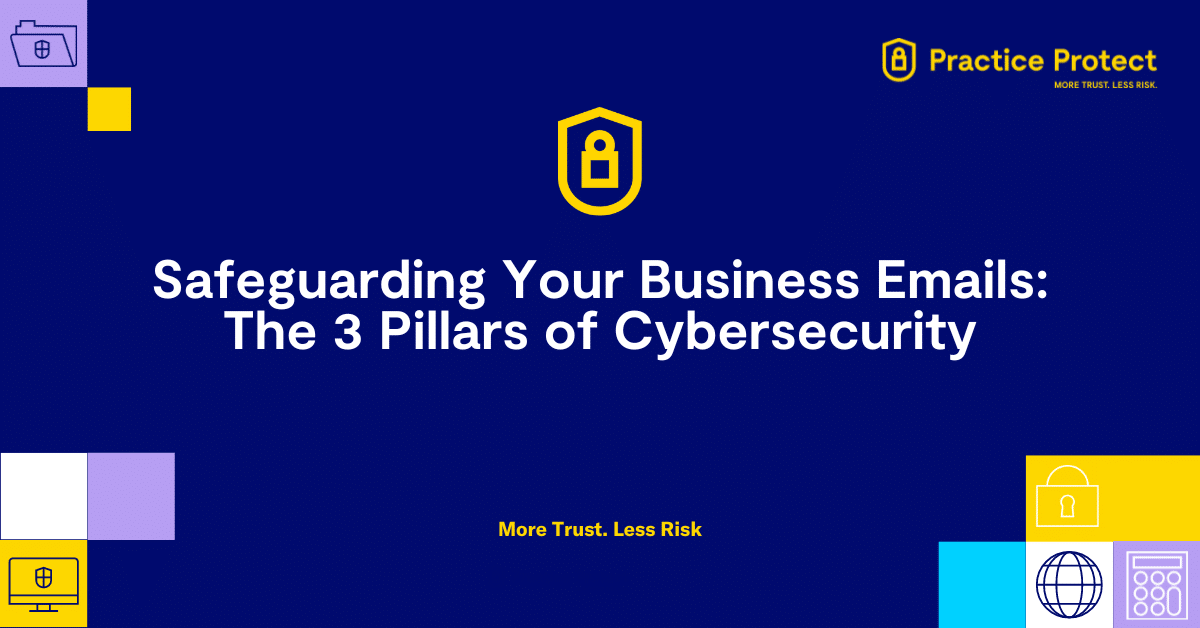Safeguarding Your Business Emails: The 3 Pillars of Cybersecurity

In a rapidly evolving cybersecurity landscape, the days of large accounting firms being the sole targets of cyberattacks are long gone. Today, cybercriminals are shifting their focus to smaller accounting firms that may have fewer resources, less protection, and limited data security training. A particularly prevalent threat in this scenario is the Business Email Compromise (BEC) attack.
The Evolution of Cyber Attacks
Think back to a time when cybersecurity discussions centered around securing client data to prevent financial and reputational damage. As protection measures for client data improved, hackers adapted and began exploiting vulnerabilities in a more unexpected place: email communication.
Imagine this: gaining control of an email account gives cybercriminals the power to steal identities, engage in business interactions with suppliers, customers, and partners using the victim’s trust, and even reset passwords across various applications. Even with robust security measures in place, an employee’s compromised inbox could grant hackers access to sensitive client data.
What is a BEC attack?
A BEC attack is a form of identity fraud also known as social engineering, defined as “the psychological manipulation of people into performing actions or divulging confidential information”.
3 Pillars to Defend Against Business Email Compromise
1. Technology
Protecting against BEC attacks requires distinct security measures beyond those that safeguard stored data. While a firm might have strong data protection measures, it could have weak access security. Hackers behind BEC attacks use legal credentials illegally, exploiting vulnerabilities in access.
Prioritize identity and permission protection using platforms like Practice Protect. Implement multi-factor authentication, limit log-ins to specific countries, monitor suspicious activities, and enable notifications. Practice Protect’s Email Hub helps to prevent unauthorized access and ensures the confidentiality and integrity of your email communications. This will help you safeguard your email inbox from various threats including phishing attacks, malware, and spam by ensuring your firm communicates securely with an advanced email security solution.
Configure Microsoft 365 accurately by reviewing settings in the Microsoft 365 Security Centre and following recommendations to boost your “Secure Score.” This is an ongoing task that demands specialized knowledge and could be outsourced to experts, particularly for smaller firms.
Extend safeguards to office computers, laptops, and mobile devices, including smartphones and tablets, to prevent hackers compromising email accounts through various entry points. Learn how Practice Protect’s Device Hub solution on how to secure your work devices.
2. Team
Remember, BEC attacks target people, not just technology. Investing in security products won’t be effective if your employees lack proper education. Train your team to recognize BEC attack signs, identify spam, and know how to respond. Teach them to report suspicious emails to security specialists and avoid forwarding such emails.
Public resources like the Small Business Cyber Security Guide and Practice Protect University‘s security training provide valuable insights and training materials.
3. Policy
Create policies for critical processes. Update payment policies to require phone confirmation for new account details, reducing the risk of fraudulent transactions. Apply similar processes to clients with secondary confirmation procedures.
Review your insurance policy to ensure coverage for social engineering attacks like BEC. Also, establish clear IT and internet usage policies understood by all employees.
In Conclusion
Effective defense against BEC attacks hinges on three pillars: the right technology, a well-educated team, and comprehensive policies. Ensuring robust email access and application security, training your team to recognize threats, and implementing sound policies are the key components to safeguarding your business from the evolving dangers of cybercrime.

